I'm working with four groups of students. I have 4 six-year-olds, 6 11-year-olds, 4 14-year-olds, and 4 18-year-olds. I also ended up including one adult Deaf Rwandan who teaches at the school because he wanted to.
I do different things on different days, but in general each kid does three different things: first, I do a one-on-one session where I show pictures (or for the older students, a word list in Kinyarwanda) and find out what the sign is for the things. The word list is a standard one that linguistics projects all over use. It's called the Swadesh list, named after whatever guy invented it. The one I'm using is modified for signed languages. It still isn't that appropriate; it includes things like "ice" that don't really exist here, and doesn't include some things that are basic concepts in Rwanda but not in the US. So I use that list but am flexible with it. I also have been getting alphabet and number/counting systems from people.
Secondly, each group sits around together and looks at the pictures/words and discusses what the sign is for that.
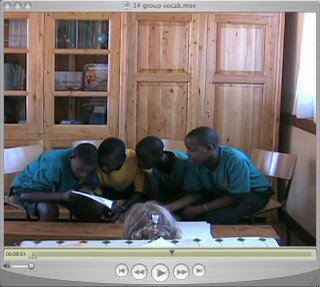
Sometimes the group comes up with a sign none of the individuals used, and sometimes they all argue about it.
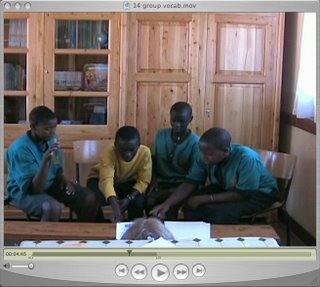
They also argue about what is happening in the pictures, and there is usually a lot of extraneous discussion as well. And bossing each other around about not participating enough. "You're just sitting there! Sign!"
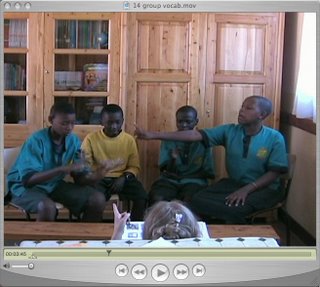
Then lastly, people from the same age group are in pairs and they watch a Tweety and Sylvester cartoon ("Canary Row", again used in lots of linguistics projects all over) and tell each other what happened in it. I ended up doing this part multiple times because the first time around everyone just wanted to watch the cartoon and (especially the littlest ones) couldn't really remember what happened afterwards. By the second and third go-rounds everyone got very melodramatic and descriptive, which is not only good data but also hilarious to watch.

The six-year-olds also decided that whoever was not watching the clip had to cover their eyes tightly so as not to peek.
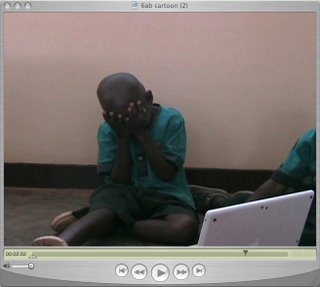
So the beginning of each time has one six-year-old poking and tapping and sometimes punching another one, who is sort of twisting around doing six-year-old blind dance moves to entertain themselves. (I had them sitting on the floor because the chairs are too big for them). I start laughing again every time I have to look at any of it for editing or compressing or whatever.
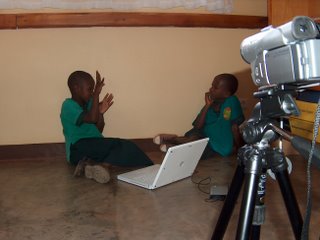
At the end, I've been left with some random amounts of time so I have everyone draw pictures. They also all drew for a while at the beginning to get used to me, the room, etc. Then they all wanted to tell the camera about what their drawings are of. This is when I get the most genocide-related narrative. I also have all the drawings. Some of them are really scary. Some of them are really silly. I am inventing new research/teaching project for making books with the kids, writing a story and illustrating it and binding it. Maybe next year.
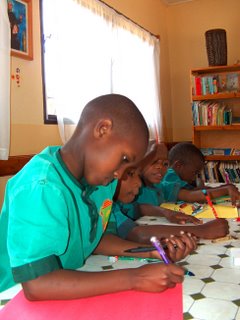
Then when I get back in the fall, I'm doing an independent study to begin analysis. My analysis will be recording the configurations of the hands that I see using a notation system that my smart professors invented. "Phonology" for signed languages means how you produce the sign. Not related to sound, but conceptually equivalent to phonology in spoken languages, which studies how you produce a word. Basically. I'll figure out what handshapes are the most common, if there are any handshapes in Rwanda that are not in ASL, etc. There are a couple of general theories related to signed languages that will get tested against this data too.
Phonology!

No comments:
Post a Comment